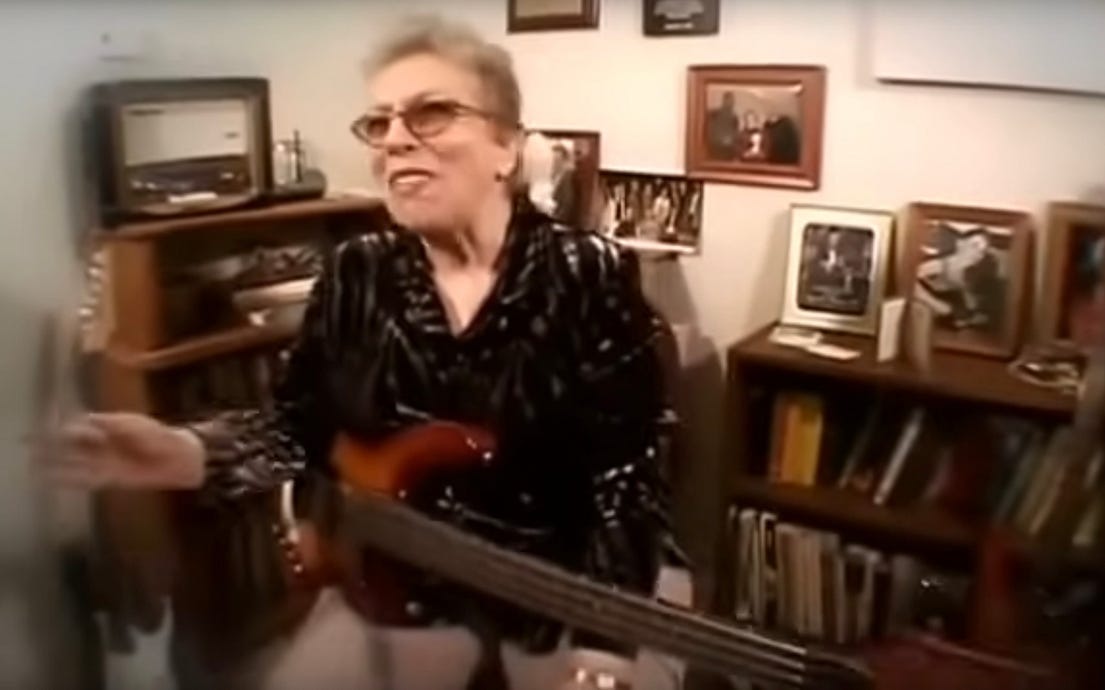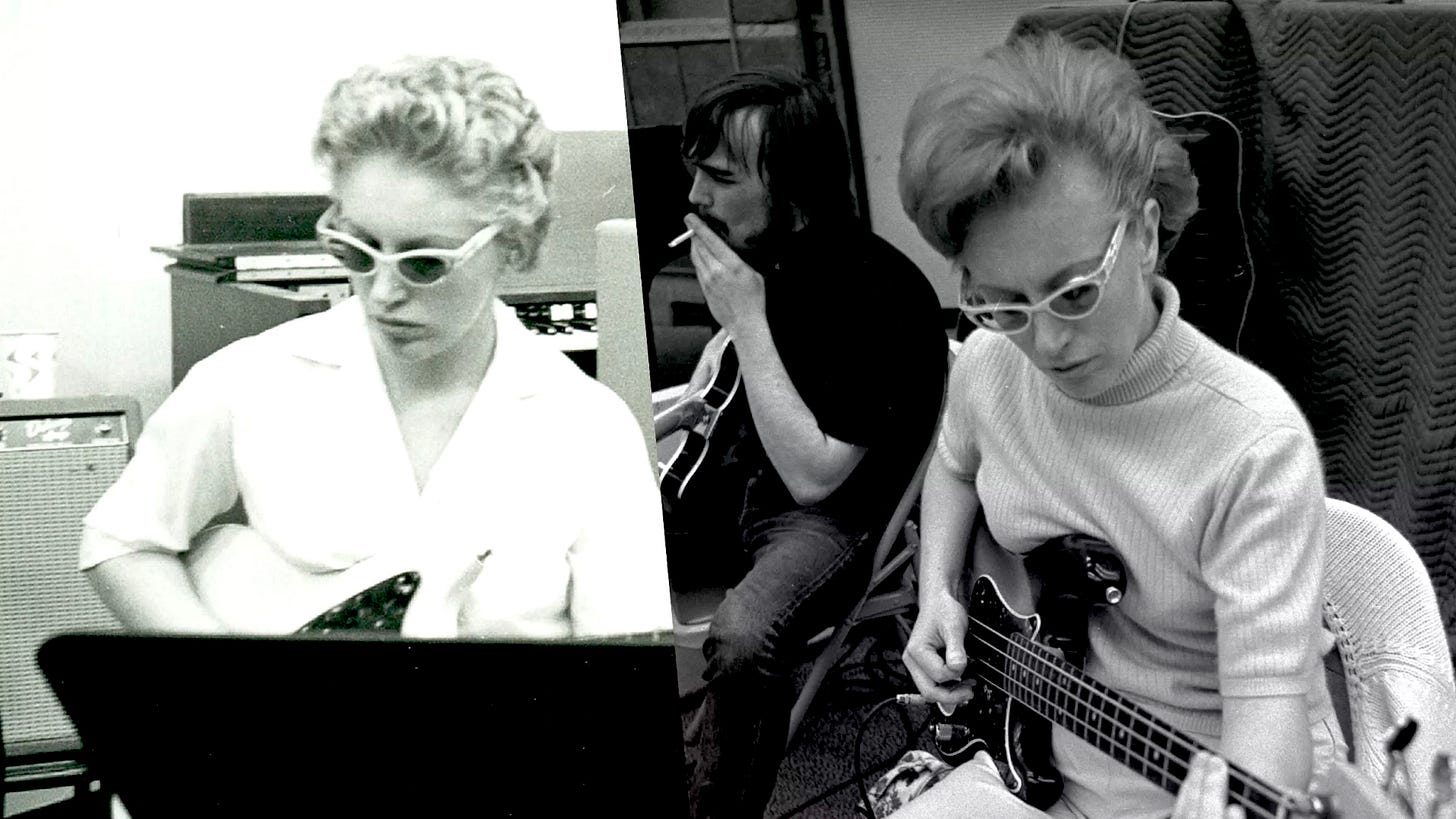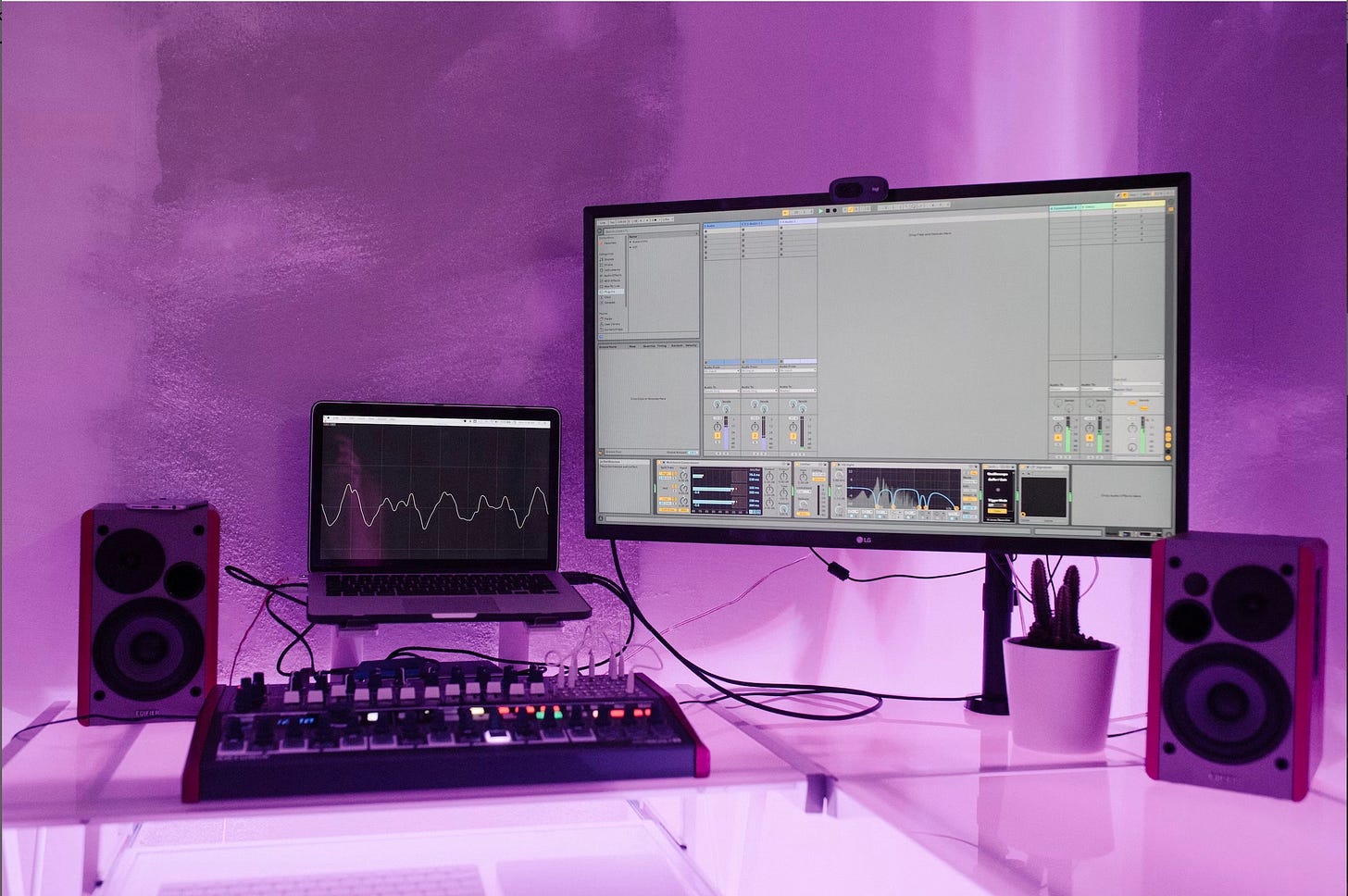“A note doesn’t have sex to it, you know? You either play it good or you don’t play it good.”
Carol Kaye has played on over 10,000 commercially released recordings. That makes her one of the most recorded musicians in history. Yet almost no one outside the professional music world knows who she is.
This is Part 2 of my series on Kaye, which is part of an ongoing series on unsung heroes in music. If you haven’t read it, here is Part 1.
Kaye started her career off playing guitar — her first guitar was a cheap steel guitar her mom bought from a traveling salesman. Only half a year into learning, she was good enough to start assisting her instructor and soon was teaching regularly. Over time, she played several different kinds of guitars and learned a wide range of styles.
She began sitting in with various bands around the L.A. region, making a name for herself while still a teenager. One thing that set her apart was that she spent a lot of time jamming in Black nightclubs. That was unusual, to say the least, at a time when the music scene was largely segregated, and women playing instruments were almost unheard of. It was in one of these clubs that Bumps Blackwell spotted her and recruited her for a studio session with Sam Cooke. Things took off from there.
About six years into what was at that point a very busy dance card, Kaye was asked to fill in on bass for a missing band member, and she decided she liked that even more than playing guitar. In interviews, she talks about the fact that bass may appear deceptively simple but, along with the drums, is the absolute foundation of a good sound. She can still rip it up on the guitar, as you will see if you watch some of those interviews, but she built most of her career around the electric bass.
Kaye was a mainstay of the popular music recording scene for two decades, covering a wide range of styles from commercial pop to rock and roll, surf rock, samba, Motown, and more. In her later interviews, she is disarmingly candid about who she liked working with, who was more difficult, and what kinds of music she liked or didn’t like playing.
The reality was that Kaye worked on many projects that she didn’t find musically interesting because she was the sole earner in her family and couldn’t turn down work. In fact, her ear for “interesting” was a big asset to those who hired her. In one documentary, she discusses working with Sonny and Cher and figuring out how to make a dead-sounding rhythm line come to life, transforming the song into something that could become a hit.
One of the other things you’ll learn from her interviews is that, as early as the late 1970s, Kaye already sensed that rock and pop were going flat. “Cardboard,” she calls it. For those of us who are fans of some of the great bands of the ’80s, this may seem puzzling, but in fact, this was when industrial, formula-based songwriting began infiltrating popular music, including rock.
Kaye, playing multiple sessions daily, year in and year out, could feel it happening. So she cut back on her work in rock and pop and moved on to other stuff. Of course, things have only continued to get worse in that regard. I’ve previously written about the topic of industrialized songwriting—check it out if you’re wondering why our popular music sounds more and more the same.
But now, the fun stuff. Here are a few more of the many great things Carol Kaye worked on:
“La Bamba” (Mexican folk song, 1958 adaptation by Richard Valenzuela, better known as Ritchie Valens).
Here is one of my favorite things Kaye recorded. Her gorgeous, jangly acoustic guitar line is as much a signature of the song as the vocal melody, especially that opening riff. I would say it’s almost as iconic as the first chord of “Hard Day’s Night.”
This was not only Valens’ biggest hit, but one of the biggest rock hits of all time, and the first song performed in Spanish to make the mainstream charts — Despacito, eat your heart out! Ironically, Valens was not a good Spanish speaker and had to learn the lyrics phonetically.
“La Bamba” remains one of the most frequently covered songs ever — even Justin Bieber took a shot at it. Little known bit of trivia: the song was initially released as a “B” Side; the “A” side was “Donna,” which was itself a bit of a hit, but not nearly as big.
…….
“Sloop John B.” (Bahamian folk song, 1966 cover by the Beach Boys)
This is one of the Beach Boys’ iconic singles and was also included in their landmark album “Pet Sounds.” In an interview around 2013, Kaye named this her all-time favorite recording (her favorite changes from interview to interview, but it’s clearly on her list). It’s not at all showy, but the song is subtle and complex, so it’s not surprising she loved it.
“Good Vibrations” (Beach Boys, 1966)
The Beach Boy’s biggest hit, of course, with Kaye now fully committed to the electric bass. There is at least one full documentary just about the making of this song. It was recorded in a half-dozen sessions in several different studios and then painstakingly patched together, mixed, and mastered by Brian Wilson.
By all accounts, no one expected such an iconic work to emerge from such a chaotic process. The song gets its groove from that circular progression on the bass and the low-register vocals, repeated throughout.
…….
As mentioned above, Kaye eventually became disenchanted with Rock music's direction. There was no shortage of other opportunities. She was in demand for soul and jazz sessions, and movie and TV producers had spotted her. She went on to do literally hundreds of movie and TV soundtracks (see Part 1 for a partial list). We’ll take a look at a few of those in Part 3.
…….
Sources:
“Carol Kaye: Session Legend Interview,” The Snapshots Foundation, 2014
If you want to check out one single reference on this list, this is the one.
…….
“Carol Kaye” Ley Vaughn, NBC 17, 2014
“Carol Kaye — Most Heard but Least Known”, Blueline Entertainment, 2015
“Carol Kaye about her famous (bass) guitar licks for Sam Cooke, Beach Boys and more”, Top 2000 a gogo, 2018
“Carol Kaye on her 10 Best Recordings”, Music Radar, March 2023 https://www.musicradar.com/news/carole-kaye-my-10-greatest-recordings





